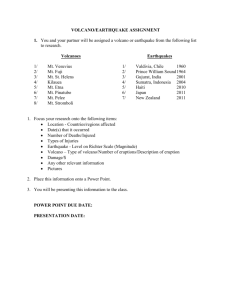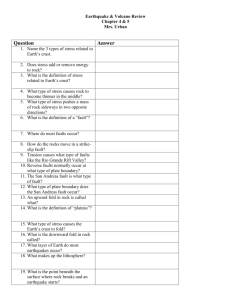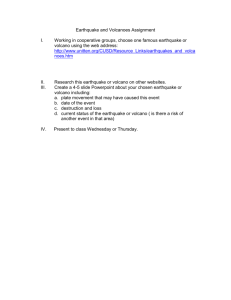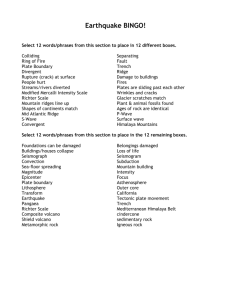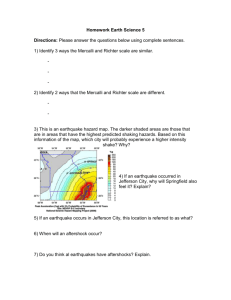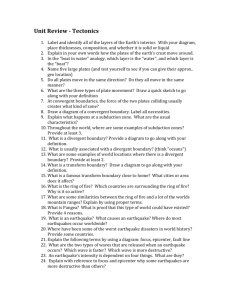Earth Science: Final Exam Review
advertisement
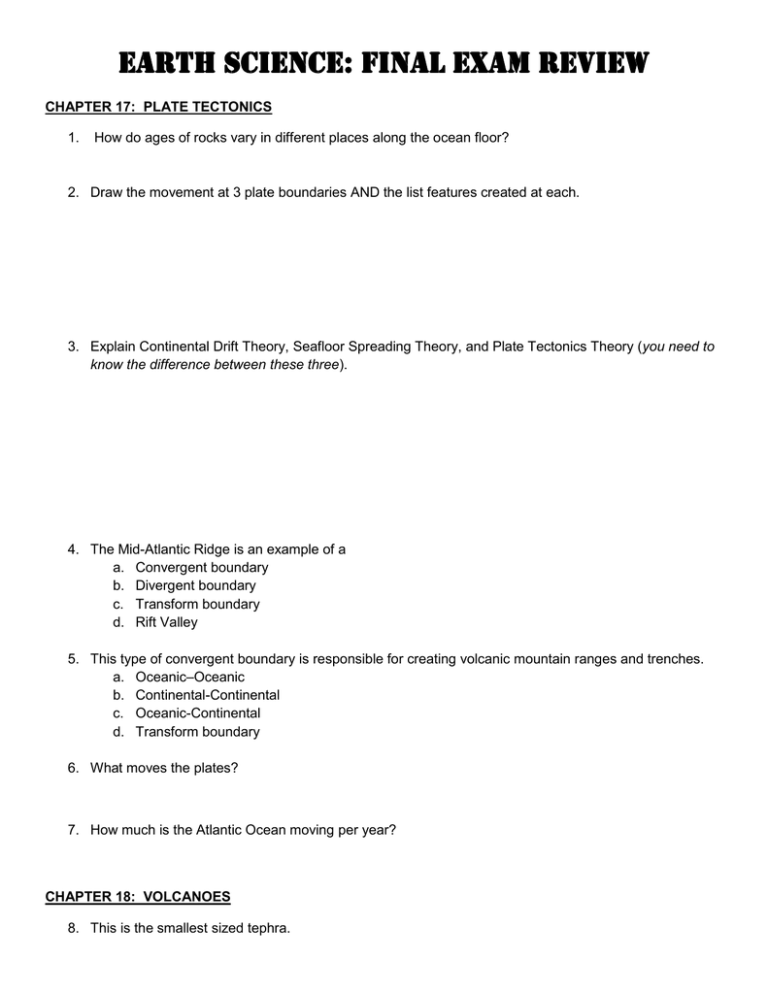
Earth Science: Final Exam Review CHAPTER 17: PLATE TECTONICS 1. How do ages of rocks vary in different places along the ocean floor? 2. Draw the movement at 3 plate boundaries AND the list features created at each. 3. Explain Continental Drift Theory, Seafloor Spreading Theory, and Plate Tectonics Theory (you need to know the difference between these three). 4. The Mid-Atlantic Ridge is an example of a a. Convergent boundary b. Divergent boundary c. Transform boundary d. Rift Valley 5. This type of convergent boundary is responsible for creating volcanic mountain ranges and trenches. a. Oceanic–Oceanic b. Continental-Continental c. Oceanic-Continental d. Transform boundary 6. What moves the plates? 7. How much is the Atlantic Ocean moving per year? CHAPTER 18: VOLCANOES 8. This is the smallest sized tephra. 9. A bowl shaped depression at the top of a volcano is called a _______________, while larger depressions that form when the summit collapses into the magma chamber is called a _____________. 10. A ____________ is a pluton that forms when magma intrudes parallel to layers of rock, while a pluton that cuts across preexisting rock is called ______________. 11. This type of volcano is the largest type of volcano. It has straight sides and is formed when layers upon layers of basaltic lava accumulates during non-explosive eruptions. 12. This type of volcano has concave, steep sides. It is generally a smaller volcano and forms when ejected material falls back to Earth and piles up around the vent. 13. This type of volcano is violently explosive and forms when layers of volcanic fragments alternate with lava. 14. Most volcanoes are found along __________________ boundaries. CHAPTER 19: EARTHQUAKES 15. ______________ deformation has high stress, while ______________ deformation has low stress. 16. ________________ faults are caused by horizontal shear, _______________ faults are caused by horizontal compression, ________________ faults are fractures caused by horizontal tension. 17. This type of seismic wave travels at the surface and moves up and down and side to side as waves pass through the rock. 18. This type of seismic wave can travel through solids only and causes rock to move at right angles in relation to the direction of the wave. 19. This type of seismic wave can travel through solids and liquids and cause rock to move in the same direction as the wave. 20. The point where an earthquake originates is called the ____________, while the point on Earth’s surface directly above is called the _________________. 21. What is a fault scarp? 22. This is a device that detects small changes in the magnetic field. 23. What factor determines the strength of an earthquake? 24. The Richter scale measures __________________, while the Mercalli scale measures _______________. 25. A __________________ is an instrument used to detect and record the vibrations of an earthquake while a __________________ is the record produced that can provide individual tracking of each type of seismic wave. 26. What are the two factors seismologists use to try to predict earthquake occurrences? Use the seismogram below to answer #27-28. 27. What is the S-P interval ? 28. What is the amplitude?
